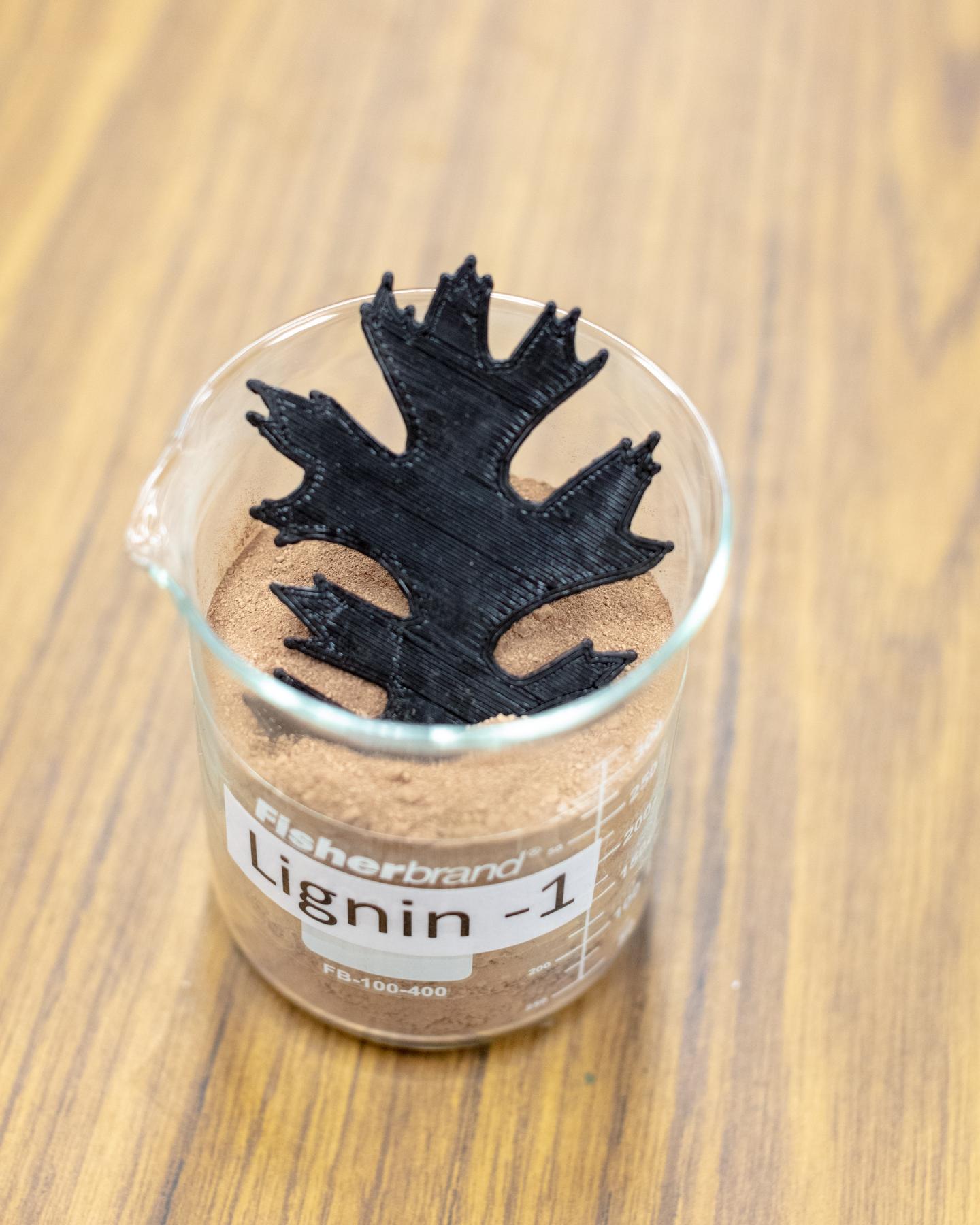
Using as much as 50 percent lignin by weight, a new composite material created at ORNL is well suited for use in 3D printing. Credit: Oak Ridge National Laboratory
Researchers are using the polymer in plant cell walls to make renewable, soft feedstock for 3D printing.
A team from the U.S. Department of Energy’s Oak Ridge National Laboratory has developed a new technique for 3D printing feedstock that could enable a profitable use of lignin, the material left over from processing biomass.
It has become an emerging challenge to produce on-demand free-form fabrication of soft materials that have complex shapes with precise dimensions and desired performance in specific environments. These soft materials are mostly polymeric in nature.
To combat this challenge, the researchers combined the melt-stable hardwood lignin with a low-melting nylon and carbon fiber to yield a composite with specific characteristics for extrusion and weld strength between layers during the printing process and excellent mechanical properties.
Lignin is the material that gives plants their rigidity, but also makes biomass resistant to being broken down into useful products.
“Finding new uses for lignin can improve the economics of the entire biorefining process,” ORNL project lead Amit Naskar said in a statement.
While the concept of using lignin is sound, the material is often difficult to work with because it chars easily, unlike composites such as acrylonitrile-butadiene-styrene that is made from petroleum-based thermoplastics. Lignin can only be heated to a certain temperatures for softening and extrusion from a 3D-printed nozzle, where prolonged exposure to heat substantially increases its viscosity.
“Structural characteristics of lignin are critical to enhance 3D printability of the materials,” ORNL’s Ngoc Nguyen who collaborated on the project, said in a statement.
However, the researchers found a way to overcome these hurdles by combining lignin with nylon. This composite mixture’s room temperature stiffness increased while its melt viscosity decreased. The new lignin-nylon material also features a tensile strength that is similar to nylon alone, except with lower viscosity than conventional ABS or high impact polystyrene.
The researchers also conducted neutron scattering at the High Flux Isotope Reactor and used advanced microscopy at the DOE’s Office of User Facilities Center for Nanophase Materials Science at ORNL. According to Naskar, the lignin-nylon based material had a lubrication or plasticizing effect on the composite.
The researchers next created a mixture that is 40 to 50 percent of lignin by weight, a substantially higher percentage than what was previously used. The scientists then added four to 16 percent carbon fiber into the mixture to create a composite that will easily heat up and flow faster for quicker printing, resulting in a stronger product.
“ORNL’s world-class capabilities in materials characterization and synthesis are essential to the challenge of transforming byproducts like lignin into coproducts, generating potential new revenue streams for industry and creating novel renewable composites for advanced manufacturing,” Moe Khaleel, associate laboratory director for Energy and Environmental Sciences, said in a statement.
The study was published in Science Advances.




